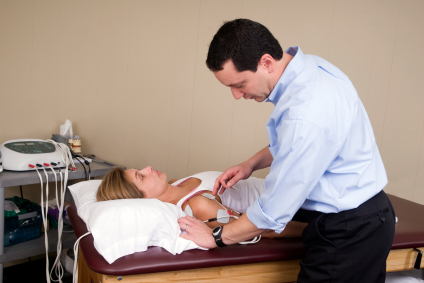Our back is composed of 33 bones called vertebrae, 31 pairs of nerves, 40 muscles and numerous connecting tendons and ligaments running from the base of your skull to your tailbone. Between your vertebrae are fibrous, elastic cartilage called discs. These “shock absorbers” keep your spine flexible and cushion the hard vertebrae as you move.
Spinal cord could be damaged due to injuries of spine extending from cervical vertebrae to the thoracolumbar junction. Below this, the cord ends and the cauda equina begin.
Incidence
- Spinal cord injuries are seen in 10-25 percent of cases of spinal column injuries.
- They are more common at the cervical level (40%) than the lumbar level (20%).
Pathology
The pathology may vary from extradural hemorrhage to cord concussion, laceration to cord crushing. Lesion has longitudinal, sagittal and coronal dimensions. Amount of neural damage has no relationship to radiographic appearance
Clinical Classification of Neurological Damage
- Complete paralysis.
- Sensory paralysis.
- Motor paralysis useless.
- Motor paralysis useful.
- Recovery.
Injury at the cervical level: This has already been discussed and may vary from concussion, root injuries, incomplete and complete cord transection.
Injuries at the thoracic level: This could result in paraplegia.
Injuries at the thoracolumbar region: Due to injuries at the thoracolumbar junction, three things can occur:
- Complete cord division and nerves intact.
- Complete cord division and partial nerve division.
- Complete cord division and complete nerve division.
Clinical Assessment
General examination: This consists of examination of the head, chest, pelvis and other systems for incidence of injuries and recording the vital statistics
Neurological examination: Examine the level of vertebral injury and find out the level of the corresponding cord injury. Now each muscle group and dermatome has to be checked .In cases of cervical cord injury, survival is impossible if the cord is injured above. The level of lesion can easily be detected by examining the respective myotome dermatome and reflexes. In cases of injury at the thoracolumbar junction, a mixed picture of both cord and root lesion may emerge and there could be an UMN and LMN feature in the lower limbs. Below is the nerve roots which are damaged, and it is easy to identify the injured nerve root by a careful examination of myotome, dermatome and reflexes of the lower limb. Slightest voluntary movement and sensation below the level of cord lesion indicate cord continuity with better prognosis. If paralysis is complete even after 8 hours and if there is symmetrical returning of reflexes and priapism in male, it indicates an unfavorable prognosis.
Return of reflex activity (e.g. anal reflex, bulbocauernosus reflex and plantar response): Return of reflex activity below the lesion indicates that the spinal shock has passed off and remaining paralysis and anesthesia may be due to injury to the long tracts of cauda equina.
Total sensory and motor paralysis after 8 hours with return of reflex activity indicates that distal part spinal cord has been separated from cerebral control.
Investigation
This consists of plain radio-graph of the affected part and all three views- anteroposterior, lateral and oblique are done. MRI and CT scan are also done and their role has already been described.
Treatment
First aid as already discussed.
- Management of vertebral fracture and dislocations as discussed in individual injuries.
- Rehabilitation programs in neurological injury.
Physical Therapy: This consists of putting joints through all the range of movements by passive stretching and exercises. Parallel bar walking, walking with of walkers or crutches is encouraged. Wheel chair transfer activities are encouraged for injuries from C6 level onwards.
Occupational Therapy: If possible, the patient is to return to his original work with minor adjustments if necessary. Nevertheless, if the patient, however, is unable to return to his original work, an alternative employment depending upon his present status of health is suggested.
Social Therapy: The attitude of the people towards these patients should not be of sympathy, but of support and encouragement. The right attitude of the society towards these unfortunate victims will go a long way in rehabilitating them back to normal.
Your spinal cord is part of your central nervous system and carries messages from your brain to all the different parts of your body, controlling almost every one of your bodily functions. An injury to your spinal cord causes partial or complete loss of function and mobility below the point where the cord is damaged. Physical therapy is part of the rehabilitation for all injuries of this type, and will be tailored to your specific needs.
For physical therapy to be effective, it is important that the patient also responds positively to the treatment, and for that to happen he/she needs to be in a positive frame of mind and not in a saddened or dull mindset. By strengthening muscles, therapy can help compensate for damaged tendons and improve the mechanics of the Spinal Cord Injury. Physical therapy also includes efforts to motivate the patient to make sure that he/she indeed remains in a positive mindset all throughout the session.




